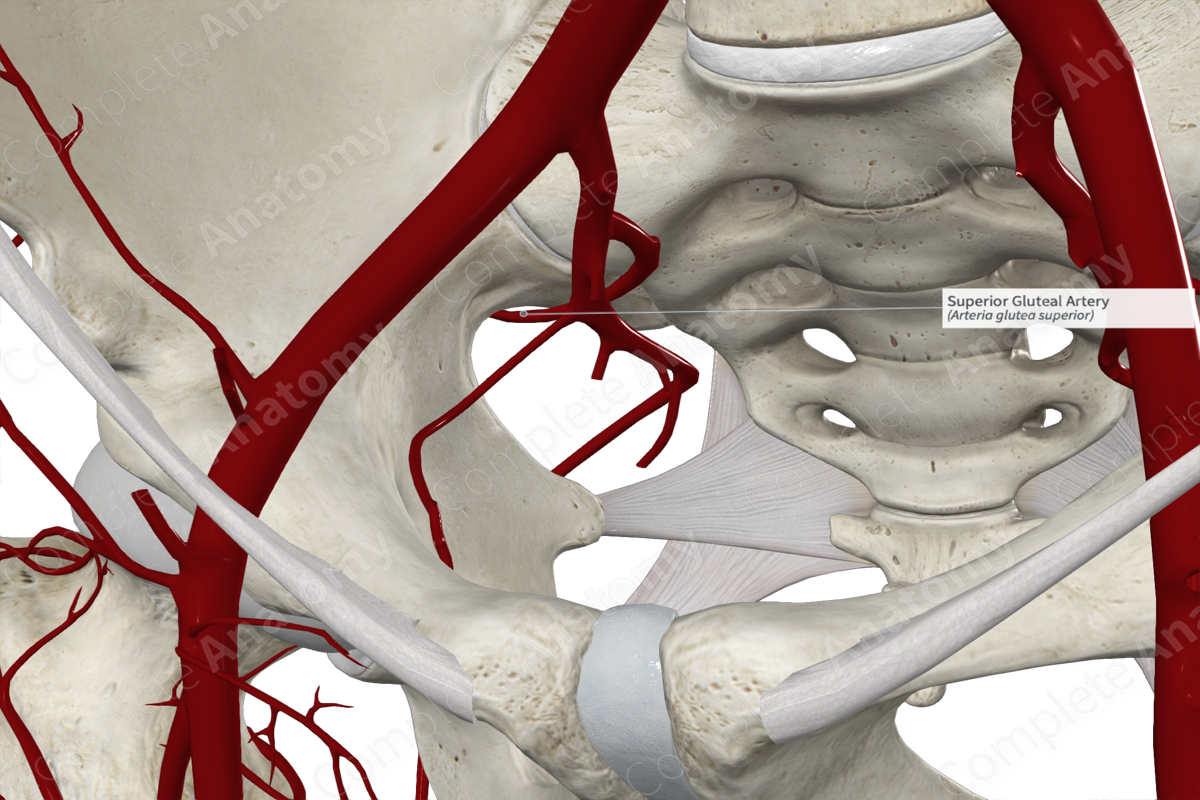
Quick Facts
Origin: Posterior division of internal iliac artery.
Course: Descends posteriorly leaving the pelvis through the greater sciatic foramen.
Branches: Superficial and deep branches.
Supplied Structures: Ilium, skin of gluteal region, and the piriformis, obturator internus, gluteus maximus, gluteus medius, and gluteus minimus muscles.
Related parts of the anatomy
Origin
The superior gluteal artery is the continuation of the posterior division of the internal iliac artery and forms its largest branch.
Course
The superior gluteal artery extends posteriorly between the lumbosacral trunk and first anterior ramus of the sacral nerve, or between the first and second anterior rami of the sacral nerves. It passes above the piriformis muscle and leaves the pelvis through the greater sciatic foramen.
Branches
As the superior gluteal artery enters the gluteal region, it divides into superficial and deep branches. The deep branch of superior gluteal artery courses between gluteus medius muscle and the ilium to further subdivide into superior and inferior branches. The superficial branch pierces the gluteus maximus muscle.
Supplied Structures
As the superior gluteal artery courses through the pelvis, it supplies the piriformis and obturator internus muscles and sends a nutrient branch to the ilium.
The superficial branch of superior gluteal artery enters the gluteus maximus muscle giving off numerous branches to this large muscle. It also supplies the skin over the sacrum.
The superior division of the deep branch of the superior gluteal artery extends along the superior border of gluteus minimus to the anterior superior iliac spine. The inferior division of the deep branch of the superior gluteal artery passes through gluteus minimus to supply it and gluteus medius muscle.
Learn more about this topic from other Elsevier products





